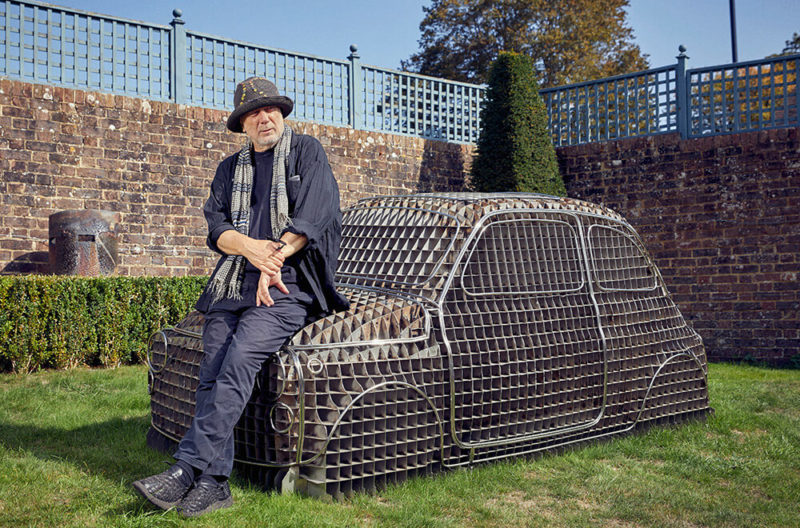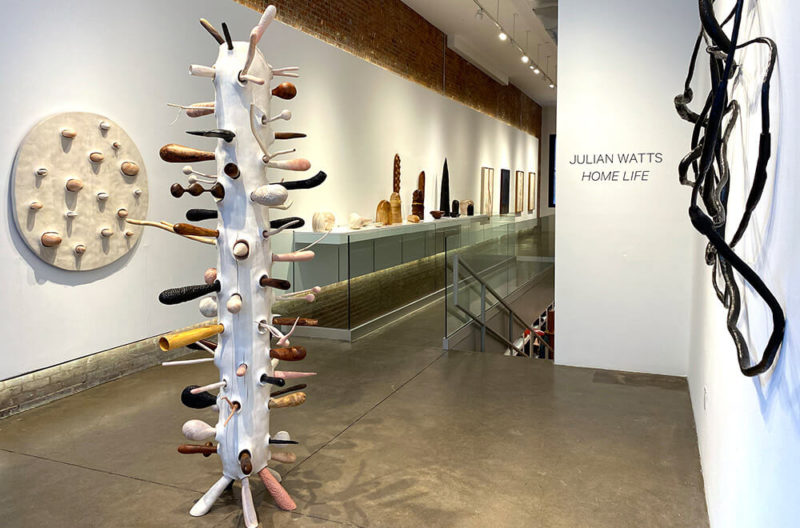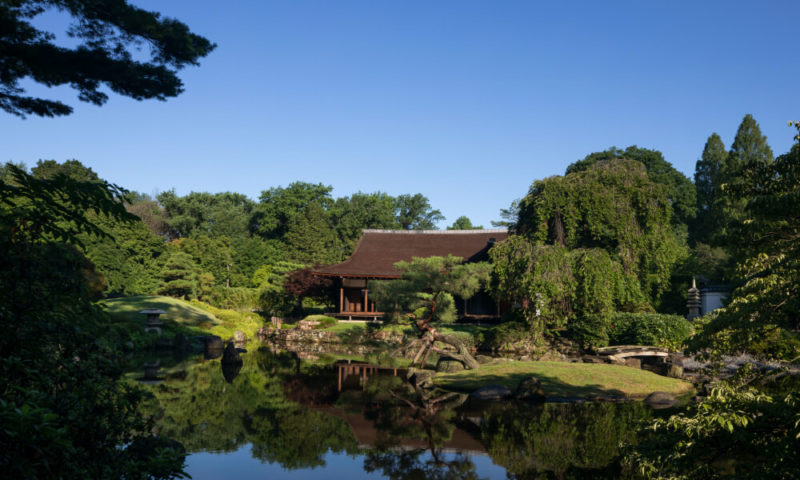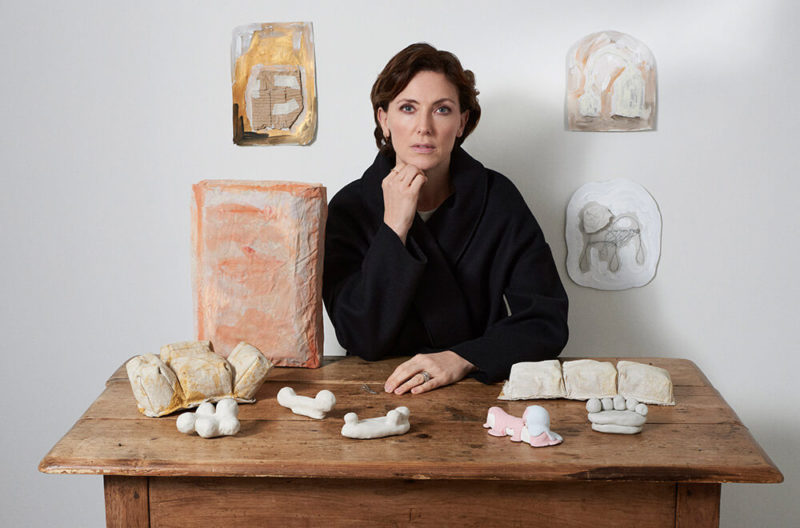JB Blunk
A capsule retrospective of the renowned sculptor’s discipline-defying oeuvre.
Kasmin Gallery, 297 10th Avenue, New York
8th October – 7th November 2020

JB Blunk, circa 1990
COURTESY: JB Blunk Collection and Kasmin Gallery
“I BEGAN MAKING wood sculpture in 1962,” said JB Blunk, “I knew how to use a chainsaw and it was one of those things – one day you just start.” A plain-spoken, hardworking Midwesterner with a mastery of wood and ceramics, Blunk was renowned for his dexterous translation of different forms from one medium to another. It was his respect for and uncompromising adherence to nature that informed his process and shaped his idiosyncratic approach. Whether a functional table or an abstract totem, all of JB Blunk’s meticulously sculpted works championed the intrinsic properties of materials.
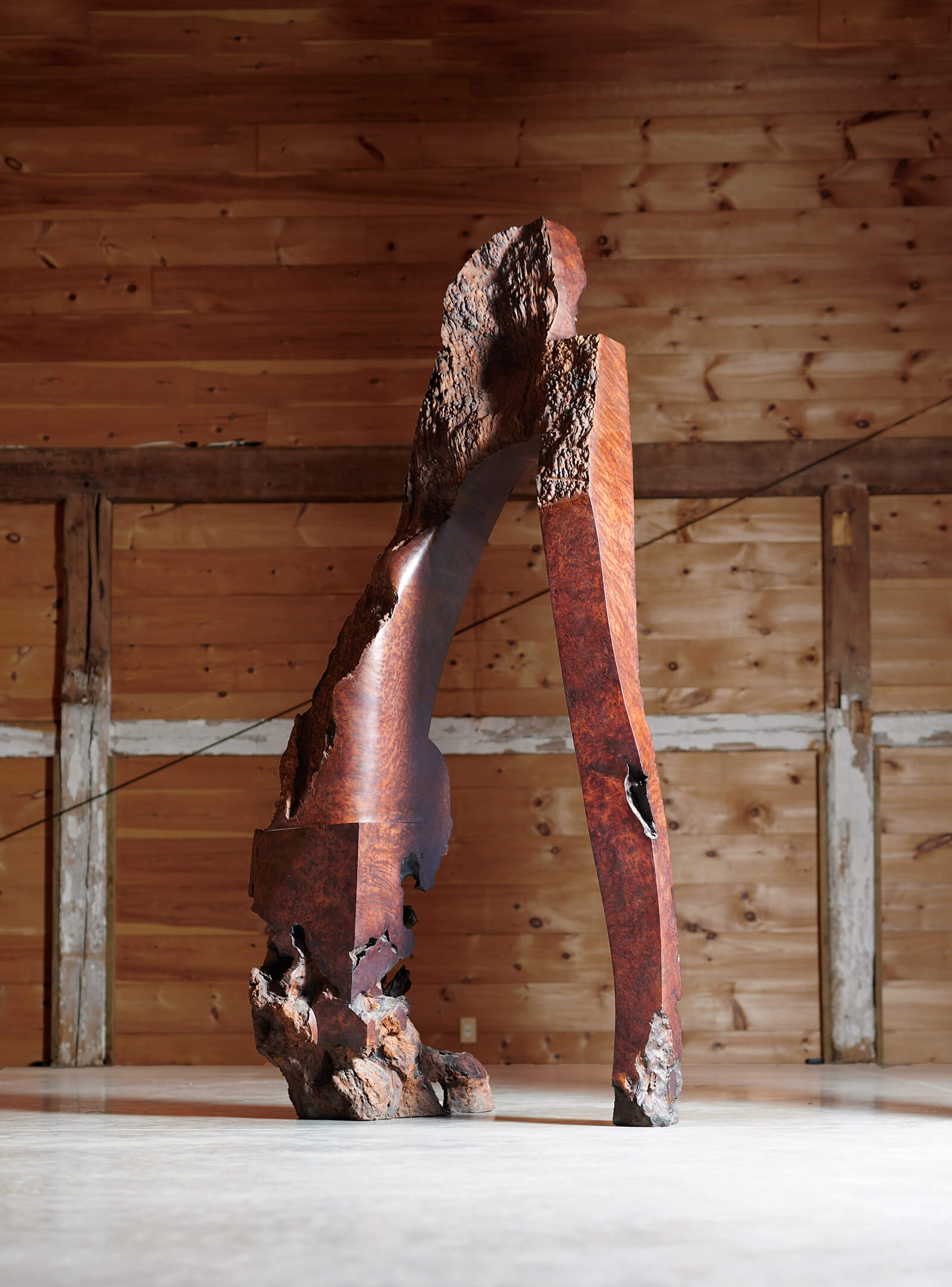
JB Blunk, ‘Wishbone’, 1977
COURTESY: JB Blunk Collection and Kasmin Gallery
Currently on view at New York’s Kasmin Gallery, an abridged selection of his most iconic ceramic and wooden pieces represents the diversity of his oeuvre, while also hinting at the inherent qualities that carried throughout his five-decade-long practice. “It was important for the JB Blunk Estate that a range of work be included in this exhibition, the first of his work in New York,” the artist’s daughter, executor, and curator in her own right, Mariah Nielson explains. “The stone and wood sculptures, furniture and ceramics represent the breadth of his practice and suggest the synthesis of all the materials he worked with. For example, chisel techniques he used on furniture were also replicated in ceramics and sculptures.” Exhibited as part of the show, works like the 1975 ‘Untitled’ (bay laurel top with redwood base stained black) stand as strong examples of his approach. Though the sculpture appears to delineate as a chair, the wooden form is ultimately left to its own devices, so to speak, and articulates its materiality without restraint.
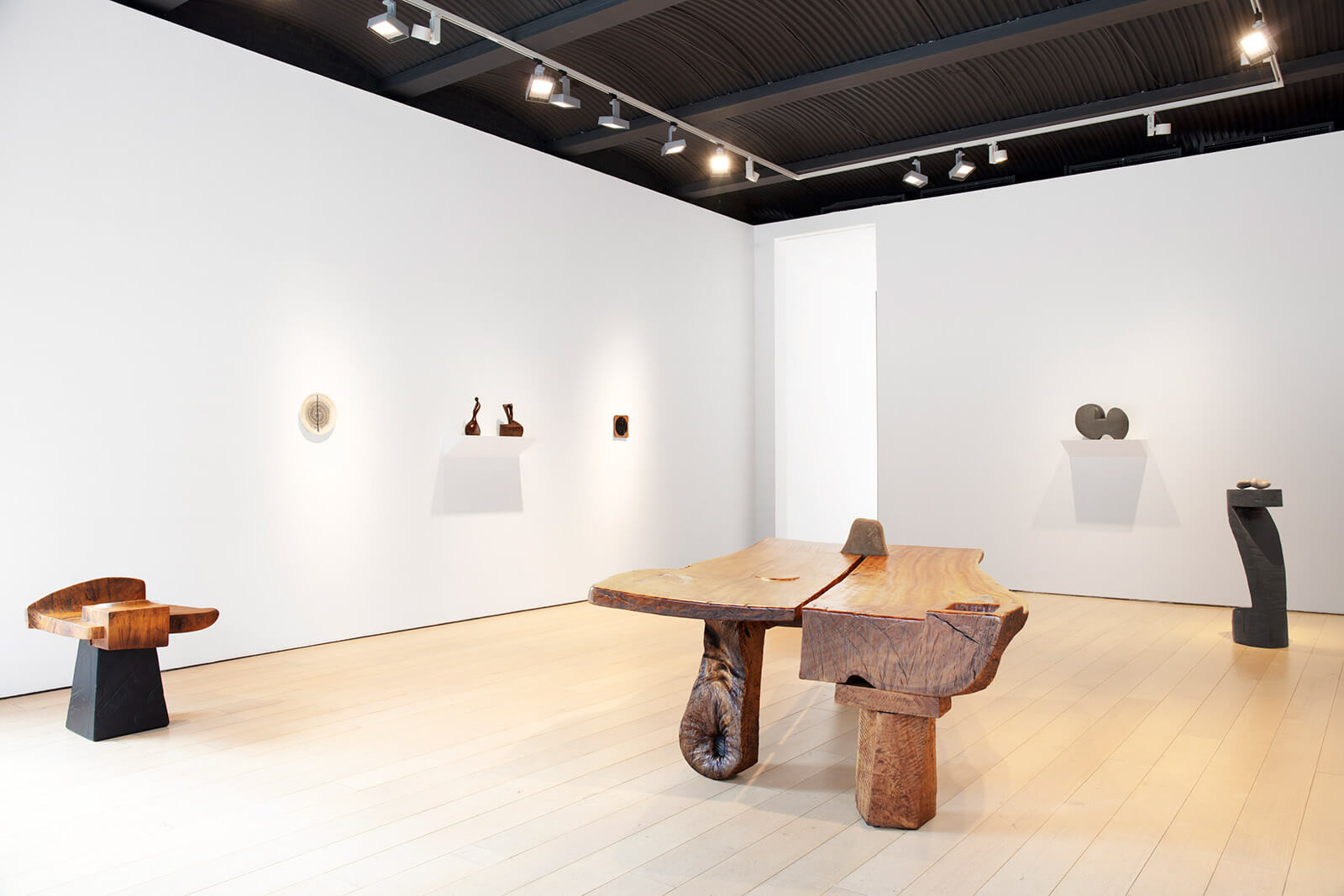
Installation view with ‘Untitled’, 1975 (left), and ‘Untitled’, 1985-94 (centre)
COURTESY: Kasmin Gallery
JB Blunk (1926 –2002) began his career studying ceramics at UCLA with renowned artist Laura Andresen. But it wasn’t until he was drafted for the Korean War, that his true passion for the medium fully emerged. “In 1951, while on a short training trip to Japan, he coincidentally met [artist and landscape architect] Isamu Noguchi,” Nielsen recounts. “This chance encounter changed my father’s life. Noguchi became his mentor and introduced him to other tutors. They remained lifelong friends.” The parallels between these 20th century masters are unmistakable. Both multi-hyphenated talents actively sought to transcend disciplinary boundaries and explore shape in its purest form.
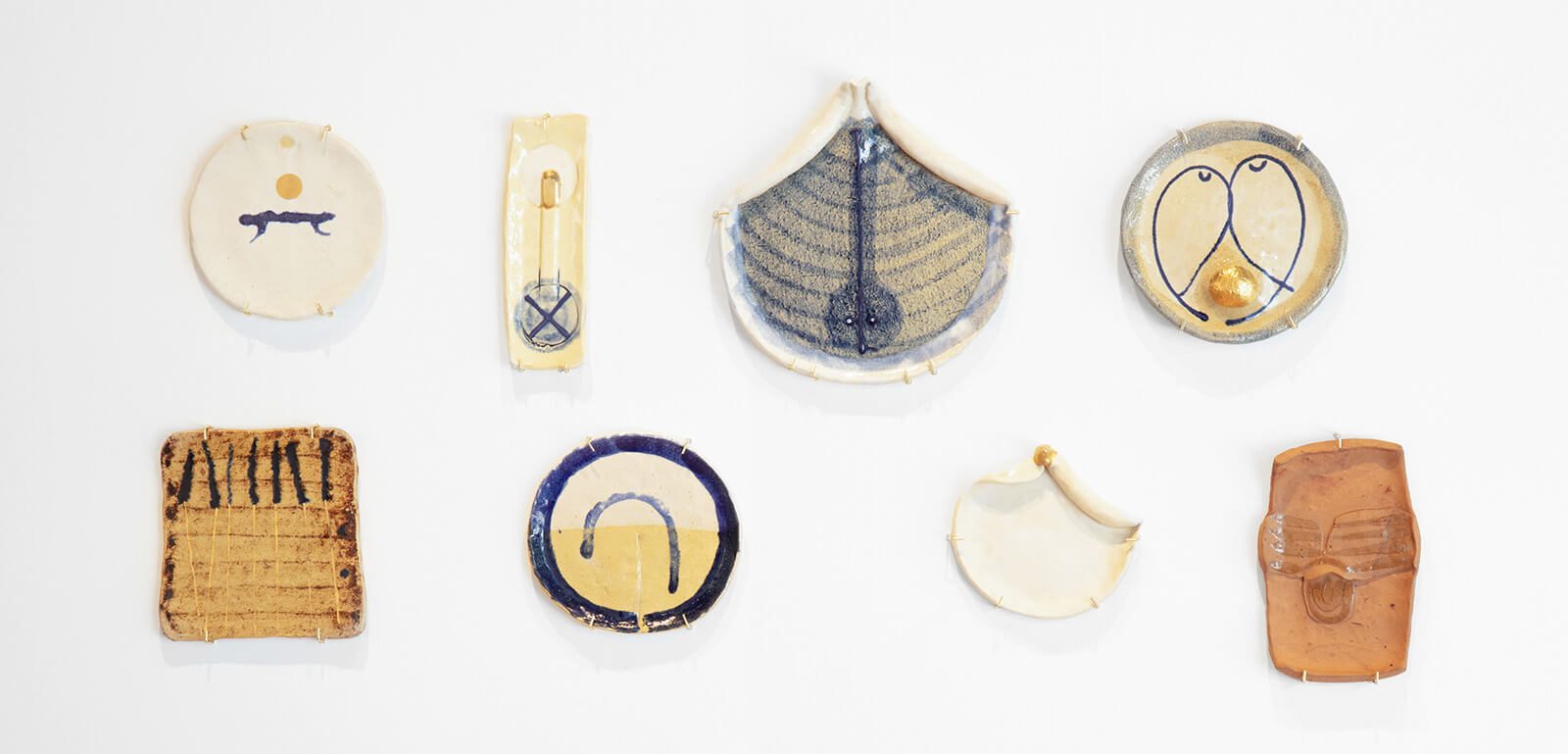
JB Blunk, ‘Untitled’ ceramics, various years
COURTESY: JB Blunk Collection and Kasmin Gallery
After the war, Blunk spent four formative years in Japan training with master Japanese ceramicists, who instilled him with an appreciation of nature and the elements of earth, water and fire. “JB was hoping to further his fascination with mingei ceramics and arrange an apprenticeship with Shōji Hamada,” the artist’s daughter explains. “Though Noguchi made the introduction, the timing was off. Hamada was about to embark on a tour of the US and so the apprenticeship ended up being with Japanese ceramicist Rosanjin Kitaoji. After training with Rosanjin for several months, JB moved on to the studio of national treasure Toyo Kaneshige, who was deeply influenced by the Shinto religion.”
In a 1973 interview with journalist Mimi Jacobs, Blunk described Kaneshige’s philosophy: “The potter that I lived with practised Shinto, Japan’s indigenous religion. This tradition was his way of relating to the world. Shinto has to do with reverence for what came before, not only in the animate and human form but also in all of nature in a complete way.”
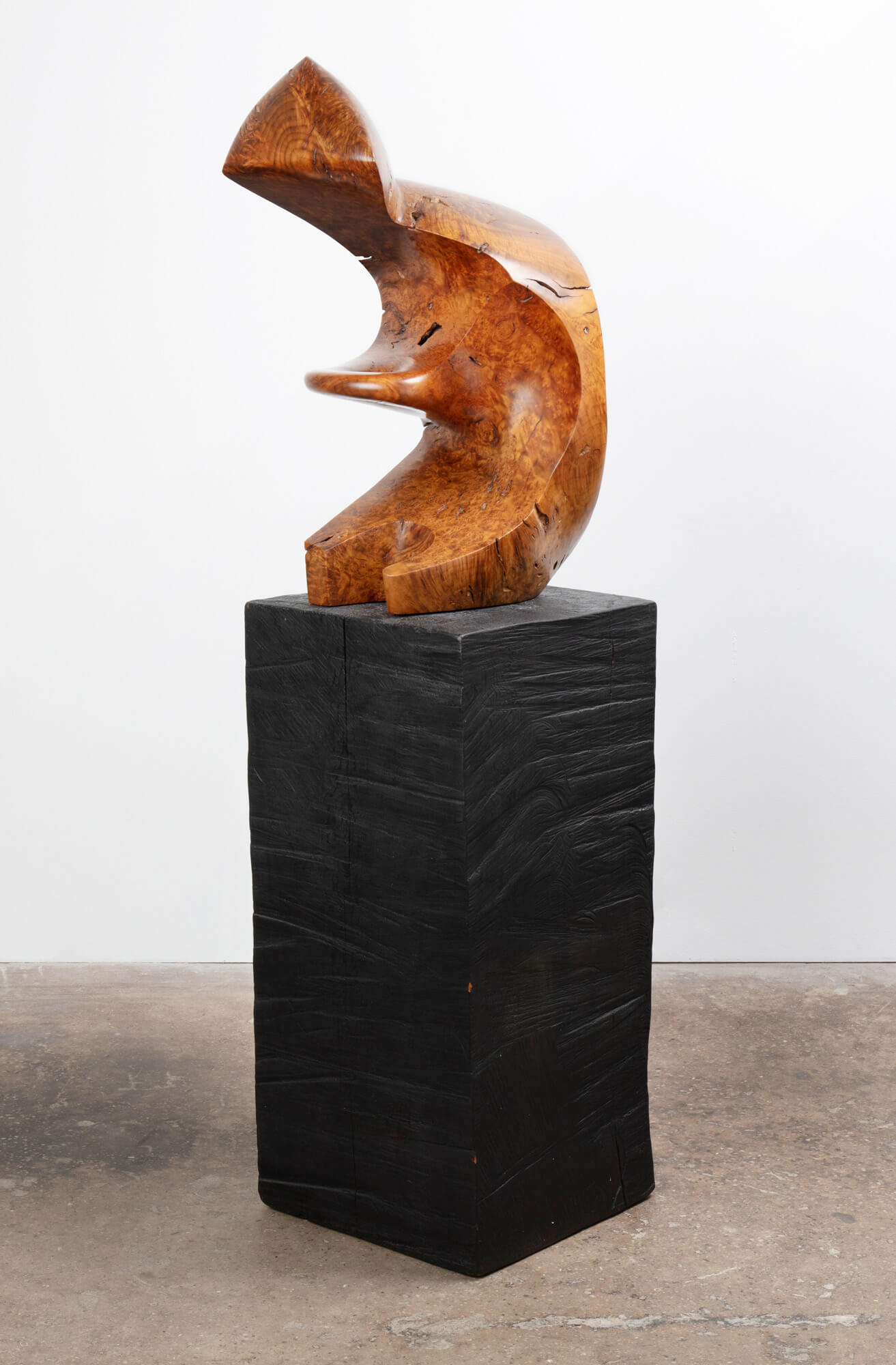
JB Blunk, ‘Madonna #1’, 1973-77
COURTESY: JB Blunk Collection and Kasmin Gallery
Throughout his career, Blunk was preoccupied with reinterpreting forms from antiquity but was perhaps most interested in emulating the aesthetic directness and honesty he encountered in Japan. This was reflected in the artist’s unabashed implementation of archetypical shapes – vessels, settees and arches – but also in allowing the material properties to guide the process. Returning to the United States in the mid-1950s, he settled down in the coastal town of Inverness, California. Building his own off-the-grid home and studio, the artist evolved this unconventional approach in this equally stunning natural setting. His subsequent works were almost always produced using wood salvaged nearby.
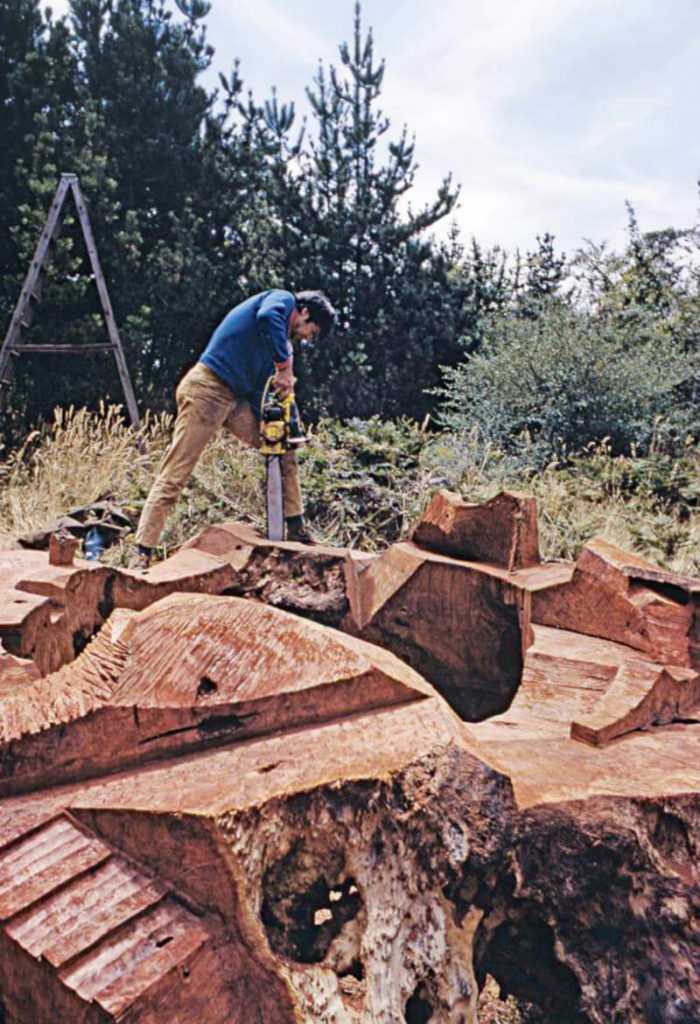
JB Blunk at work on his redwood installation, The Planet, 1968
COURTESY: © JB Blunk Collection
“His devotion to nature stemmed from this time in Japan. The potters he worked with sourced clay from surrounding hills and allowed its inherent qualities to affect their final forms. Stones embedded in the clay body were left, and the lack of glaze brought attention to the natural colour and finish of the material,” Nielsen describes. “My father applied this way of working to all his creations. For example, when he carved Redwood Burls, he usually left naturally occurring imperfections and worked with the original form of the material. This translation from ceramic tradition and technique to wood carving, jewellery making, and painting is what I think is unique about my father’s work – the synergy and cross-disciplinary nature of his art and life.”
With the contemporary focus on wood and ceramics as sustainable and expressive mediums – influencing everything from the collectible market to architecture – a retrospective of JB Blunk’s dynamic oeuvre is timely. This exhibition informs our current zeitgeist with an understanding of how to delicately harness nature.
Kasmin Gallery – committed to supporting an ongoing intellectual and visual dialogue with influential Modern and Contemporary artists.




